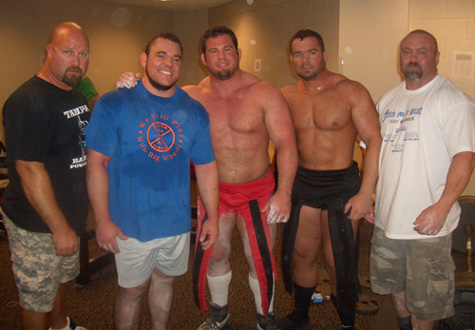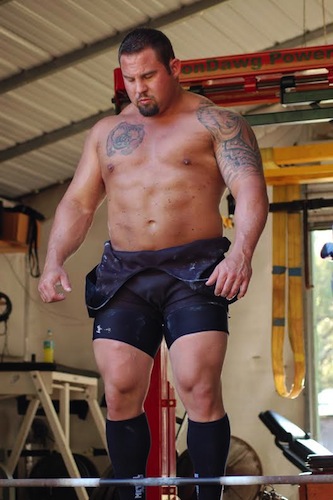
30 Apr The 10/20/Life Nutrition Approach
By: Brian Carroll
I’m not a diet or nutrition expert. My knowledge is more anecdotal than research-based, and what I know, I know through the work and recommendations of people far more well-versed in the topic than I am—there are many experts who’ve spent years teaching people how to do this stuff properly.
In other words, I have no idea how to get show-ready and ripped at 2 percent body fat. I don’t know how to do that. What I do know, however, is a little bit about what you need in your diet to get big and strong, so I’m going to give you a little bit of common sense in that department and tell you what I do personally. I didn’t want to come up with a cheesy title like “Nutrition For Meatheads,” but that’s essentially what I want to give you—some ideas that have worked well for me and others over the years, minus the hard science that tends to put everyone to sleep.
A Simple Nutritional Philosophy
First off, nobody gets big or strong from “dieting”—meaning, they’re trying to get lean by eating very little—or by starving themselves for sixteen hours at a time on heavy training days. Nutrition, I’ve found, is exactly like training. You have to figure out what works for you.
I have several clients who can go zero carbs all the time, yet still be strong as bulls with no issues whatsoever. Most people, however, can’t start taking away carbs, because their strength will suffer. This is exactly what happens to me. I’ll look better, but I won’t perform as well in the gym.
Of course, this isn’t an invitation to work your way up to 30 percent body fat with high blood pressure and high blood cholesterol. All I’m saying is that you’ll have to face certain consequences when you start making adjustments. If you’re trying to get really strong, you’re probably not going to be able to get “beach ready” concurrently. Maybe you can, but I certainly can’t.
Eating To Get Strong
The ideas I’m giving you here constitute what we can call a performance diet. The key is to eat enough to optimize your performance without getting fat or unhealthy. This is the foundation of how I eat. I’ll eat enough to get through my long and tough lifting sessions, then scale back the carbs and junk if I’m getting too bloated. Conversely, I’ll add carbs back in if I’m feeling flat, bad, or weak during a session.
What you want here is to eat enough of the right foods, and to have decent timing with your macronutrients. If you play with your diet and get too cute with everything, you might see your abs come in, but you might also see your squat come down by 10 percent. It’s all a matter of give and take, so choose wisely, and make small adjustments over time. Taking small percentages of body fat off incrementally is a great idea, but hacking off ten pounds at a time can absolutely destroy your leverages. Be smart about this.
Supplementation
For me, the key to supplement use is to keep things simple. Here are a few things that I really like—and that I’ve found to work:
Quattro Whey: The best whey protein I’ve used. Easy on the stomach too. Magnum is top notch!
Rocket Science: Great preworkout that will kick your focus and intensity into another gear.
Helix BCAA: I use this DURING training and finish it shortly after wrapping training up. Can’t go wrong with either Nubreed or Magnum!
Macronutrient Issues
Over the years, I’ve eaten my up three weight classes, from 220 all the way up to 275 (even to 308 for bench only). Honestly, I don’t think you need some fancy nutrition degree to understand the need for adequate amounts of protein and carbs with fats before a heavy training session—and some carbs to refuel afterward.
This is a pretty easy process. If you feel small and flat on the scale, then add some carbs. If you’re feeling super bloated and soft, scale back the carbs and drink more water to bring your weight down after a day or two. If you feel small and tiny in general, then eat your ass off. Eat as much as you can, and do it often.
When you feel like you’re starting to put on too much fat too fast, knock off the junk, play with your macronutrient timing, and eat more after your heavy sessions. Just remember, you don’t want to eat a bunch of junk before you lift because your blood sugar will crash and you’ll feel like a lazy piece of shit.
Aesthetics
Let’s face reality here: Unless you’re a major outlier, your physique is going to suffer if you’re 100 percent focused on strength sports and getting strong. Some guys can stay ripped and maintain a v-taper, like Adam Driggers, Jimmie Pacifico, Matt Minuth, Dondell Blue, Dan Green, Kade Weber, Jay Nera, or Casey Williams. These guys look incredible, and could probably be successful bodybuilders with very little work.
Most times, however, this won’t be the case. “We” will end up giving a lot more away in aesthetics than “they” do. I’m sure these guys have good diets, too, but not everyone is going to be able to look like them and stay strong.
You have to choose your goals and understand what you’re going to have to give up to hit them. It’s no accident that strongmen and powerlifters often don’t look as strong as bodybuilders, but that’s okay. The goal of any bodybuilder is to look big, strong, and lean—and not to have to “go” in terms of being strong.
I’ve had times in my career where I’ve been super lean. Sometimes, this even happens by accident. My legs start to thin out first, and then my squat goes directly into the shitter. My bench press and deadlift would stay the same, but my squat has always been my bread and butter, so this is a real pain in the ass for me. No good.
My thick-ass waist (core) is what allows me to stay so erect, deliberate, and sturdy on a big squat. It’s a give-and-take because having a huge waist isn’t exactly aesthetically pleasing. That’s what I need to lift huge weights, however, so that’s the sacrifice I need to make.
The Guidelines
Anyway, here are ten tips, in (sort of) chronological order, that’ll help get and keep you on the right path. Some of these obviously depend on where you are in your training cycle, along with the current state of your body composition. Use common sense here:
1. Don’t eat junk right before you train. Leave this far away from the start of your sessions, preferably saving it for after your workouts.
2. Have some caffeine and a protein shake for breakfast first thing in the morning.
3. If you want a snack between breakfast and lunch, have some fats and some more protein.
4. Eat some red meat for lunch, along with some good complex carbs, prior to your heavy training sessions.
5. Have a shake and some nuts for your pre-training snack.
6. Make sure to have some Gatorade or some BCAAs, along with water, during your session. Stay hydrated, especially if you’re sweating a lot.
7. Slam a shake afterward, with some carbs, for recovery.
8. Eat a good meal that’s loaded with proteins and more starchy carbs.
9. Use carbs at this point to bring your weight up or down. If you’re cutting back on carbs to drop some weight, then add in more healthy fats for energy.
10. If you’re training in the morning, move things around and make the most of it—but I advocate training at night whenever possible to allow for a full day of nutrients, and to prepare for your big lifts.
Get the 10/20/Life second edition book here: 10/20/Life
Brian Carroll
Latest posts by Brian Carroll (see all)
- Protected: -Header Image Post Template 2024 - April 18, 2024
- Brian Carroll X Professor Stu McGill full interview 2024 - April 16, 2024
- Protected: -Video Post Template 2024 - April 15, 2024






Sorry, the comment form is closed at this time.